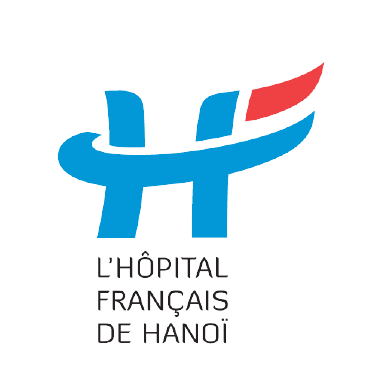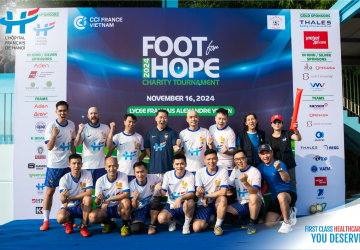Press & Media - Wed, 03/27/2024 - 11:25
Hanoi French Hospital Hosts Pioneering Medical Seminar on Robotic Microscopes in Surgery
Last update 03/27/2024 - 11:39
Hanoi, 23 March 2024 – Hanoi French Hospital (HFH) hosted a landmark medical seminar looking at the use of robotic microscope surgery on March 23.
The event expanded the boundaries in the field of medical technology and surgery, drawing the attendance of esteemed physicians from hospitals nationwide.
The seminar featured insightful presentations by top medical experts. Dr. Ngo Manh Hung, Deputy Director of Neuro-Surgery Center at Viet Duc Hospital, captivated attendees with his presentation on use of the KINEVO 900 microscope in neurosurgery sharing his extensive experience and successful outcomes using the microscope.
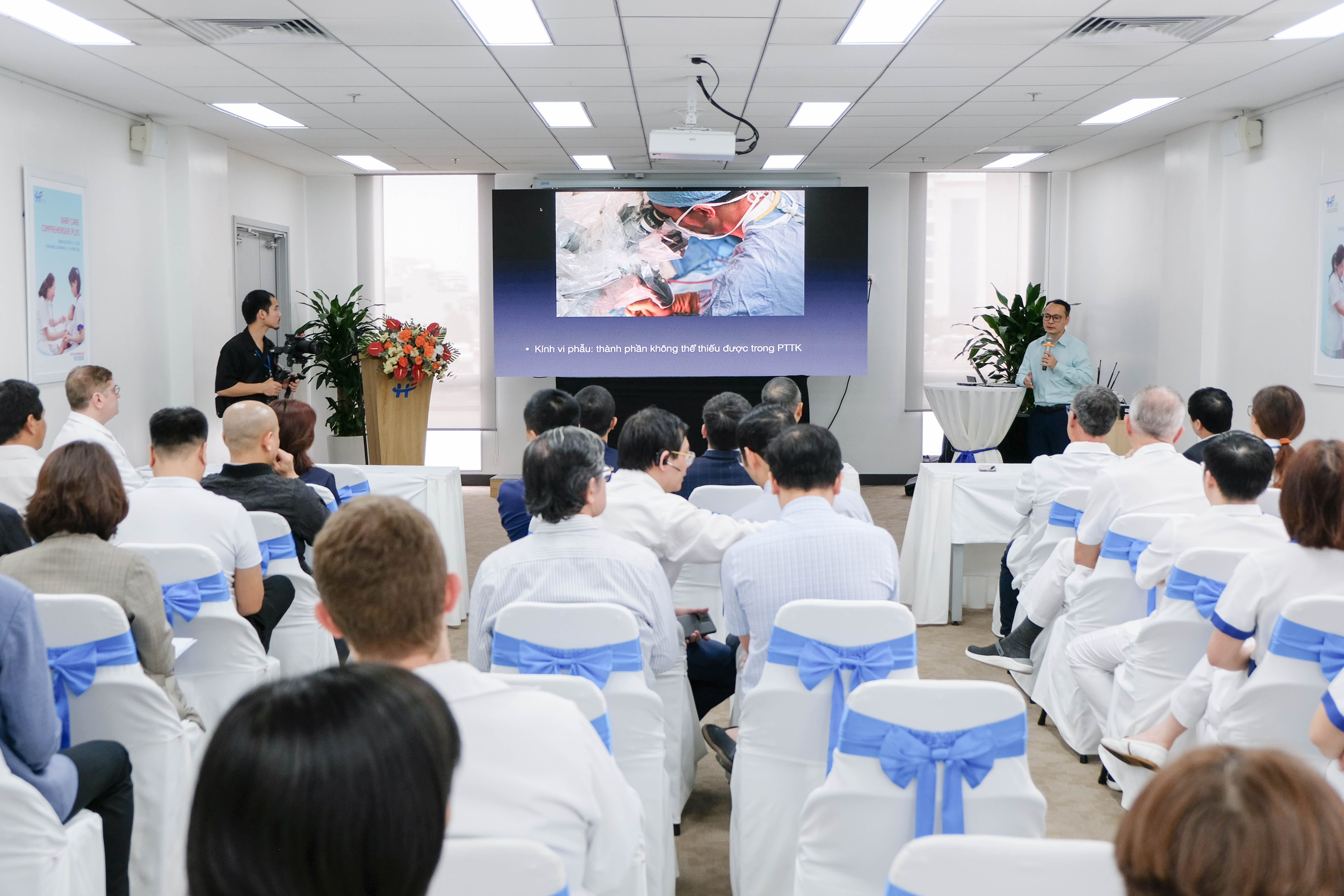
“Most surgeries nowadays aim for the goal of making the smallest possible incision but providing the widest possible view. To achieve this, we need two important factors: a light source introduced into the surgical field and ultra-high-resolution imaging to see every detail clearly,” said Dr. Hung.
“Moreover, the light source should not obstruct the surgeon's view. Currently, 80-90% of neurosurgeries require a microscope, and without a surgical microscope, major and deep surgeries cannot be performed.”
The surgical microscope used by Dr. Hung is utilized in surgeries for brain tumors, spinal tumors, aneurysms, and coronary artery bypass.
“In neurosurgery, the surgical microscope acts like an extended arm and eye for the surgeon. Many limitations and obstacles that previously existed can be overcome with the ZEISS KINEVO 900,” said Dr. Hung.
With decades of surgical experience and having used various types of supportive equipment, Dr. Hung said that the ZEISS KINEVO 900 surgical microscope allowed surgeons to perform operations with sophistication and high precision, helping to maximize treatment of diseased areas while minimizing or causing the least harm to healthy areas. This, in turn, limits the impact on the nervous system and reduces the sequelae left for patients.
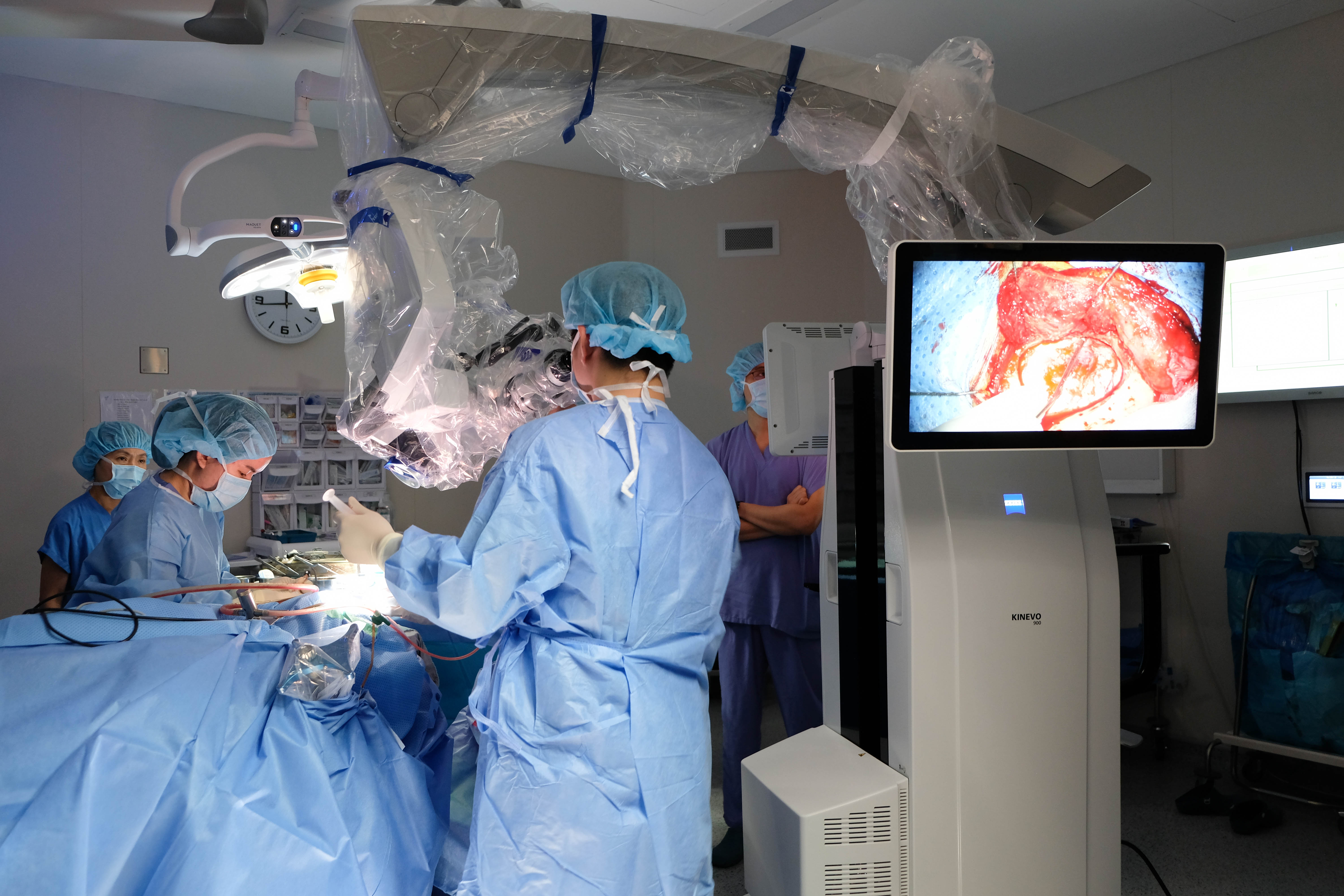
In cases like high-grade spinal cord tumor surgeries, the biggest challenge for surgeons is the lack of a clear boundary between the diseased area and the healthy tissue.
The fluorescence features of the ZEISS KINEVO 900 help determine blood flow in the smallest vessels, analyze hemodynamics in real-time, and display tumor tissue through fluorescence imaging, helping to differentiate diseased areas within healthy brain tissue.
Such devices are also of great value in training as surgeries can be recorded or broadcast in a vivid and visual way, allowing every member of the surgical team to follow and analyze.
"Thanks to modern technology, training is no longer just based on personal experience but has shifted to evidence-based medicine," added Dr. Hung.
Meanwhile, Dr. Nguyen Hoang Huy, Head of the Ear Department at the National Ear, Nose, and Throat Hospital, explored the potential of the surgical microscope in cochlear implant surgery, emphasizing the significant advances in surgical practice.
"ENT surgeries are conducted in narrow and dark incisions, where during surgery, very small openings of about 0.3-0.5 mm are made. Touching a nerve could cause the patient to suffer facial paralysis, loss of taste, and taste disorders. The ZEISS KINEVO 900 provides a very bright light source and high-resolution magnified images, which are fundamental needs in ENT surgery," said Dr. Huy.
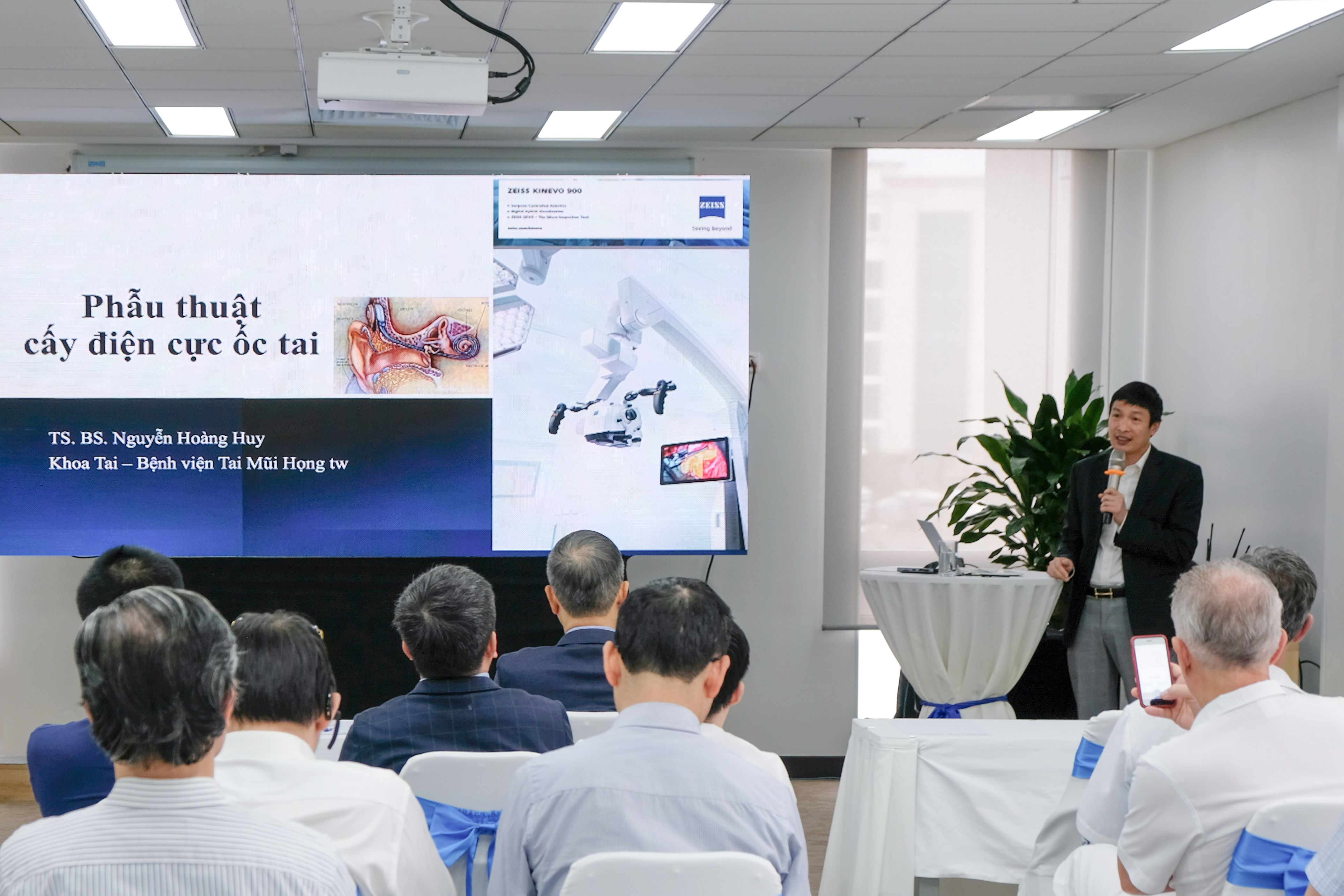
"Additionally, the ZEISS KINEVO 900 microscope has a position memory function. During surgery, after drilling and operating at one site, the surgeon must move to another site and then return to the original position. With other devices, repositioning is required, but this microscope can return to the original surgical position thanks to its surgical point lock and position memory features, enhancing the observation range and reducing surgery time."
The interaction and discussion among the attendees demonstrated a spirit of cooperation and learning in medicine and surgery.
Attendees also had the opportunity to tour the modern operating rooms of the Hanoi French Hospital and witness the operation the ZEISS KINEVO 900 in action.
HFH is the first medical facility in Northern Vietnam equipped with the new generation surgical microscope ZEISS KINEVO 900, demonstrating the hospital's commitment to improving surgical efficiency, reducing treatment time, and helping patients recover quickly, thereby reducing medical costs.
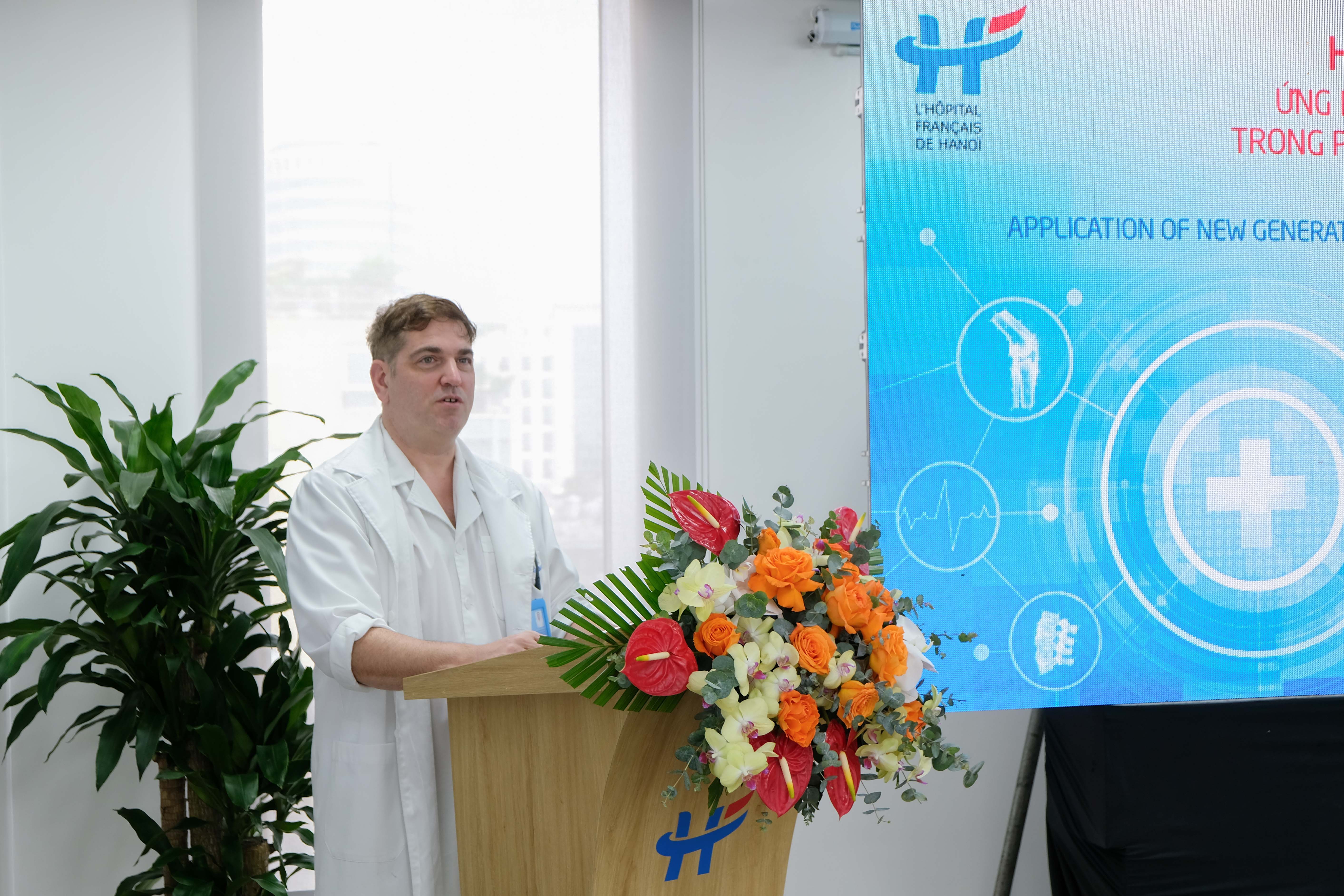
HFH’s Chief Medical Officer Dr. Erwan Debuc emphasized the hospital's dedication to excellence and innovation.
“Through events like today's seminar, HFH not only shares groundbreaking advancements in medical technology but also fosters a culture of continuous learning and improvement,” he said.
“Our commitment to adopting and mastering innovative surgical techniques is a testament to our relentless pursuit of excellence. By doing so, we not only enhance our own capabilities but also contribute significantly to the broader medical community and patient care standards in Vietnam and beyond.”
Echoing this sentiment, Assoc. Prof. Vo Thanh Quang, Deputy General Director of HFH, shared his vision for the future.
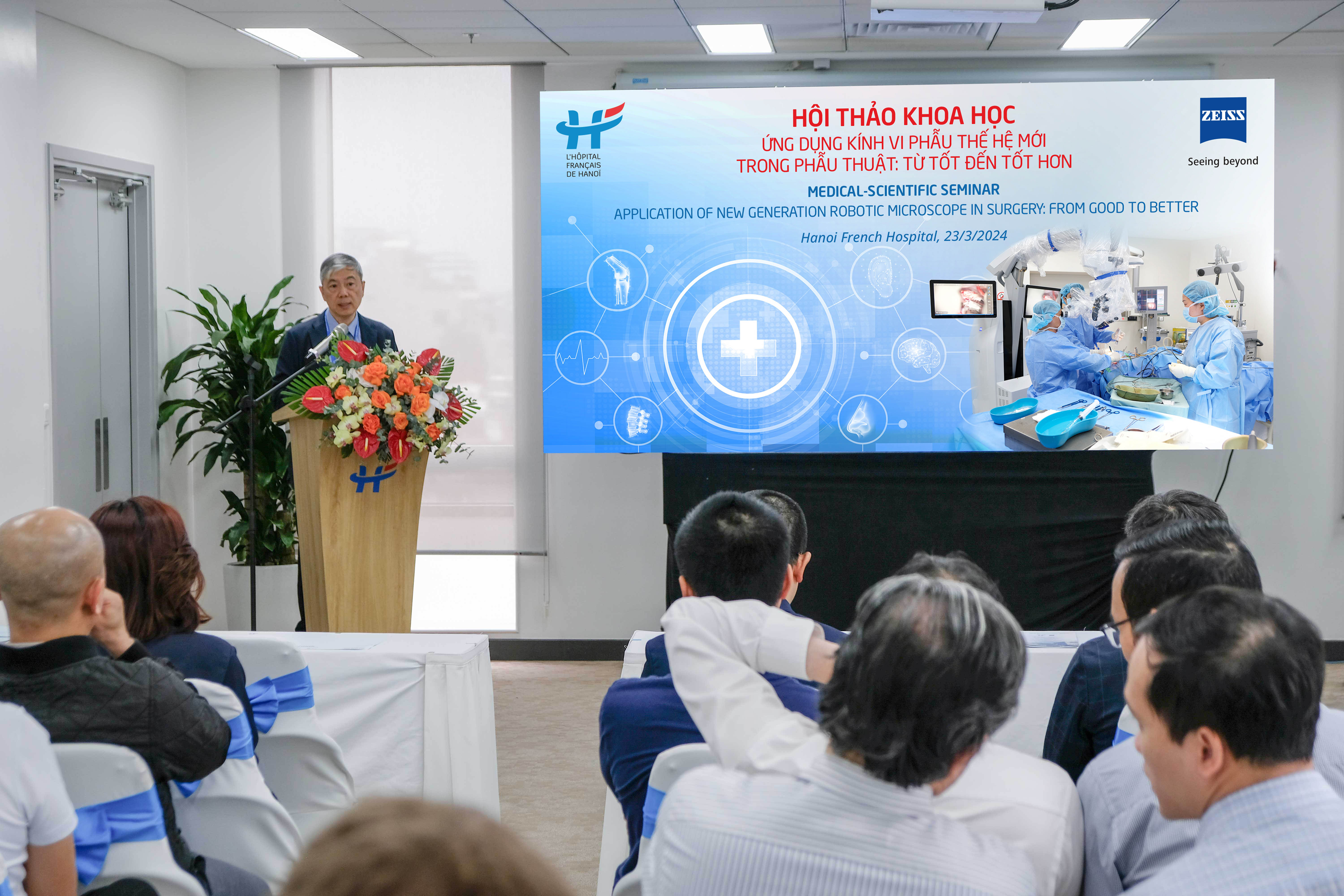
“Today's seminar is an important step in our ongoing effort to enhance surgical care. Our investment in state-of-the-art technology like the ZEISS KINEVO 900 and our focus on professional development through knowledge sharing are crucial to our mission,” he said.”
“As we strive to explore new possibilities in medicine, our primary aim is to deliver First Class healthcare to our patients and contribute to medical advancements that will positively impact society.”


